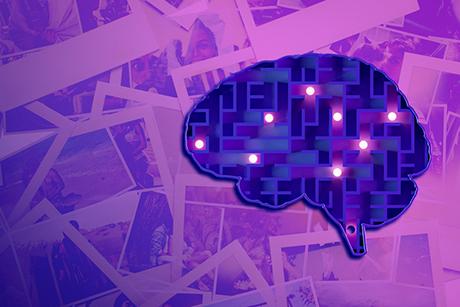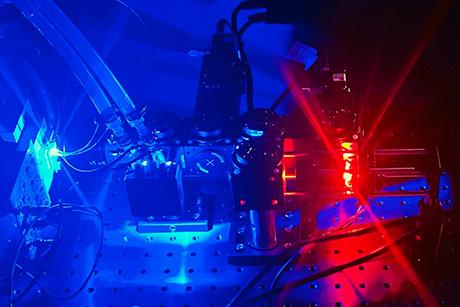Talking Shop: Professor Steven Dubowsky
Research group develops affordable water purification systems for remote villages.

Professor Steven Dubowsky
Professor Steven Dubowsky received his bachelor’s degree from Rensselaer Polytechnic Institute and his MS and ScD degrees from Columbia University. He is currently in both the Department of Mechanical Engineering and the Department of Aeronautics and Astronautics at MIT, and serves as director of the MechE Field and Space Robotics Laboratory. Professor Dubowsky’s research has included the development of modeling techniques for manipulator flexibility and of optimal and self-learning adaptive control procedures for rigid and flexible robotic manipulators. He has authored or co-authored nearly 300 papers in the areas of dynamics and the control and design of high-performance electromechanical and optical systems. His current research includes fuel cell power for mobile systems and photovoltaic-powered clean water systems for challenging field environments. He is a registered Professional Engineer in the State of California and has served as an advisor to the National Science Foundation, the National Academy of Science/Engineering, the Department of Energy, and the US Army. He is a Fellow of both the ASME and IEEE and is a member of the Sigma Xi and Tau Beta Pi honor societies.
You’ve spent a lot of time in Mexico setting up your purification system. Can you tell me a bit about how it works and what it does?
The system is designed to bring purified water to small remote communities in the world that do not have access to clean water. In many of these villages the residents must drink water that contains high levels of dissolved minerals and biological contamination. The technology we developed removes both of these serious health risks using reverse osmosis desalination to remove dissolved minerals and salts, and ultraviolet radiation to eliminate the biological contaminants. Both of these processes are energy intensive. This energy is furnished in the form of electricity from solar photovoltaic panels. Due to the fact that the sunshine that powers the system is subject to variable weather factors, the system contains an embedded smart microcontroller to optimize the system performance. Since systems for this application are relatively small, they must be run autonomously a good part of the time. The controller also supports this autonomous operation.

Researchers from Professor Dubowksy’s group set up their system in Mexico.
Why did you choose to implement this system in Mexico? What particular needs does the area have that make it a good fit?
While we have tested this technology in computer simulations and in our laboratory at MIT, such academic work cannot truly reveal all the challenges of using the system in the real world. The system was deployed in is a small (500 approximately residents), remote village in the jungle in the heart of the Yucatan Peninsula of Mexico. It is representative of the thousands of villages in Latin American, Africa and Asia where the residents do not have access to healthy water. The indigenous residents in this region of Mexico are principally subsistence farmers and beekeepers. Among other things, it was important to evaluate the technology in this environment to determine if the people would accept this relatively sophisticated technology, as well as operate, maintain, and protect it. In other words, are they willing to adopt it as their own? This is in contrast to many “appropriate” solutions provided by the developed nations that are based on relatively primitive methods with limited capabilities.
The motivation to apply this technology at this specific area was provided by the W. K. Kellogg Foundation of Battle Creek, MI, which has a major charter to support work that will improve the health of children in Latin America and the Caribbean. The Foundation approached us to bring this project to Mexico with their financial support.

Professor Dubowsky works in Mexico to set up his purification system.
How has working internationally been different from other projects you’ve worked on? Do you have unique design or implementation considerations with this one?
In the past our laboratory has worked on many international programs in the developed world, including those in Europe, Asia, the Middle East, and Australia. This project was a far more challenging experience. Our team included MIT students and staff, members of the Mexican NGO (Fondo Para La Paz), and members of the village itself. Designing the system for this environment was relatively straightforward. We used software to design an optimal system given the local water chemistry, the location of the facility in the world, and the water needs of the community. However, assembling a system and testing it in a remote field environment without easy access to electricity for our tools – most of which had to be brought from MIT – was challenging.
Furthermore, we had to provide training materials and hands-on training sessions in both Spanish the local dialects of the villagers. These challenges were balanced by the good sprits and commitment to the project of the residents of the village.
At what part of the process are you now? What obstacles, if any, have you faced as you implement this in another country?
The system has been completed and in the hands of the community for about six months. It is producing purified water at a cost to the residents that makes it self-sustainable. This cost is a small fraction of the cost of commercially produced water in the region, which is far more expensive than the community can afford. Even at this affordable price, the revenue generates enough income to pay the salaries of the members of the village who operate and maintain it. That will certainly lift their standard of living. In addition, a share of the funds generated go to supporting some of the critical needs of the village. More importantly, the children of the village now have safe, healthy, clean drinking water.
What is the future of the project? Where do you hope to see it end up?
We are now actively working with other groups to transfer the technology developed in this program to meet the purified water requirements of a number of other communities. These groups include both not-for-profit NGOs and commercial enterprises located in places such as Indonesia, Chile, Ghana, Haiti, The Philippians, Belize, and Honduras, among others.


